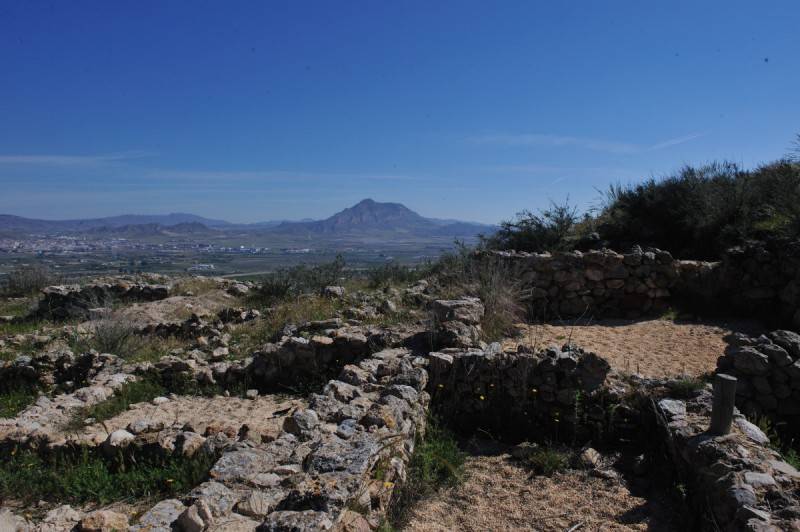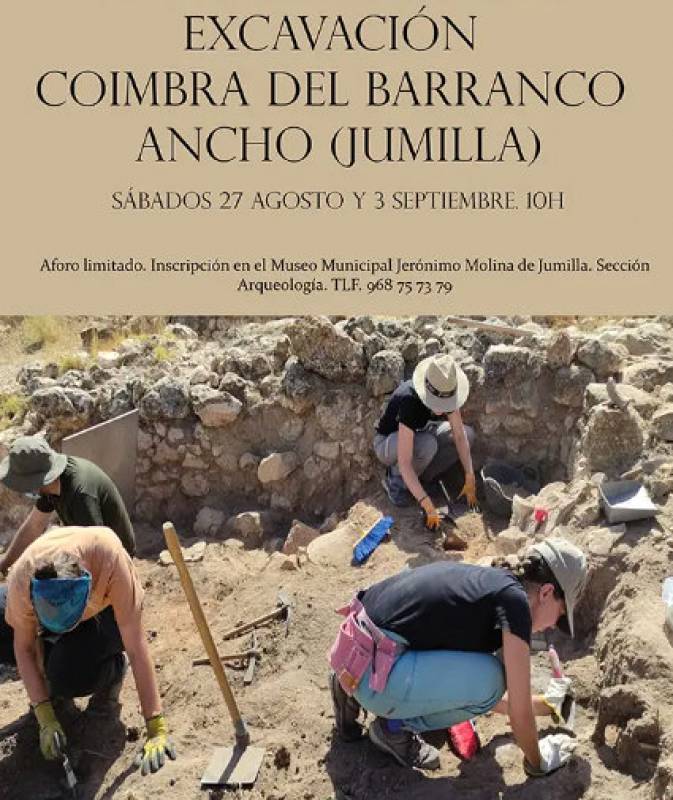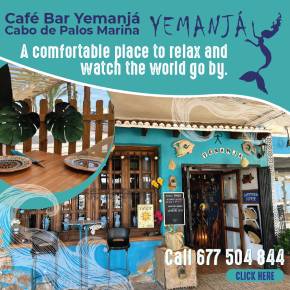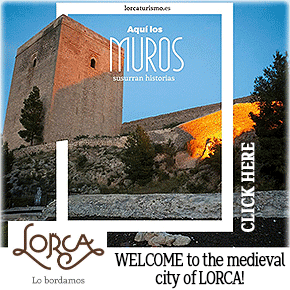ARCHIVED - September 3 Open Day at the Coimbra del Barranco Ancho archaeological dig in Jumilla
Learn about the Iberian settlement which was built near Jumilla over 2,000 years ago
 In late August and early September this year there are two open mornings at the archaeological dig of Coimbra del Barranco Ancho in the municipality of Jumilla, where investigations are continuing into the Iberian settlement which was built and inhabited between 2,400 and 2,200 years ago.
In late August and early September this year there are two open mornings at the archaeological dig of Coimbra del Barranco Ancho in the municipality of Jumilla, where investigations are continuing into the Iberian settlement which was built and inhabited between 2,400 and 2,200 years ago.
The 80 or 90 dwellings, home to approximately 500 inhabitants, were terraced up the hillside and were thus partially under the ground, and over time a criss-cross street pattern developed. Individual homes were generally rectangular and made out of adobe walls on a stone base, with rooves made from straw, mud and branches. An ingenious rudimentary drainage system was used to ensure that rain was carried out of the buildings through small channels on the floor.
 At the eastern end of the settlement is the main necropolis, or burial ground, while others located nearby are those of "La Senda", which is on the path between the settlement and the Monasterio de Santa Ana, and “El Barranco", which is outside the walls of the settlement.
At the eastern end of the settlement is the main necropolis, or burial ground, while others located nearby are those of "La Senda", which is on the path between the settlement and the Monasterio de Santa Ana, and “El Barranco", which is outside the walls of the settlement.
One of the many items found at the site is a memorial stone known as the “Cipo funerario de los Jinetes” which was in grave number 70: this is decorated on three sides by images of figures on horseback images and on the fourth by a farewell scene.
The visit on September 3 takes place at 10.00 and is free of charge, but numbers are limited: prior reservation is essential at the Archaeology section of the Jerónimo Molina museum in Jumilla (968 757379).
For more local events, news and visiting information go to the home page of Jumilla Today.
Oficina de Turismo Jumilla
The tourist office in the centre of Jumilla is easily found by driving straight into the centre of the town along the Avenida de Murcia and following the signposts. The tourist office is alongside the Parque de Don Albano Martínez Molina, where there are a number of parking spaces.
Jumilla, in the north of the Region of Murcia, has become internationally famous over recent decades due to the quality of the wines produced in the municipality, and wine tourism has begun to attract visitors from other parts of Spain and the rest of Europe.
The tourist office is happy to provide a range of maps and leaflets showing the different bodegas which can be visited within the municipality. Some of these form part of the Rutas del Vino de Jumilla, the Jumilla wine route, and can either be visited as a guided tour or sell their produce directly to the public.(see feed below for more details)
However, the town and the surrounding countryside have plenty of other attractions for visitors, and the popularity of Jumilla wines is leading more and more people to discover other facets of the tenth largest municipality in Spain.

These include the spectacular countryside and birdlife in the Sierra del Carche, the historic remains which range from cave paintings and a Roman mausoleum to the castle, the Iglesia de Santiago, the Town Hall and the Teatro Vico, and the gastronomy: rich stews are accompanied not only by the wines of the area but also by Jumilla pears, which also enjoy Denomination of Origin status.
Tourism in Jumilla is not as seasonal as it is in the coastal areas of the Region of Murcia, but the town is at its liveliest during the fiestas in Holy Week and the August Fair, which incorporates the grape harvest celebrations and the Moors and Christians parades.
The Altiplano of the Region of Murcia, which consists of the municipalities of Jumilla and Yecla, is only just over an hour by car from the Mar Menor, Cartagena, Mazarrón, Torrevieja and Alicante, and anyone wishing to visit real inland Spain and world-class wineries is advised to include Jumilla in their schedule.
Opening hours
Summer
Tuesday to Friday from 10am to 2pm
Saturday and Sunday 10am to 2pm
Monday closed
Winter
Tuesday to Friday from 10am to 2pm and 5pm to 7pm
Saturday and Sunday 10am to 2pm
Monday closed
Click for full information about visiting the Jumilla municipality and its wine bodegas: Jumilla section


































